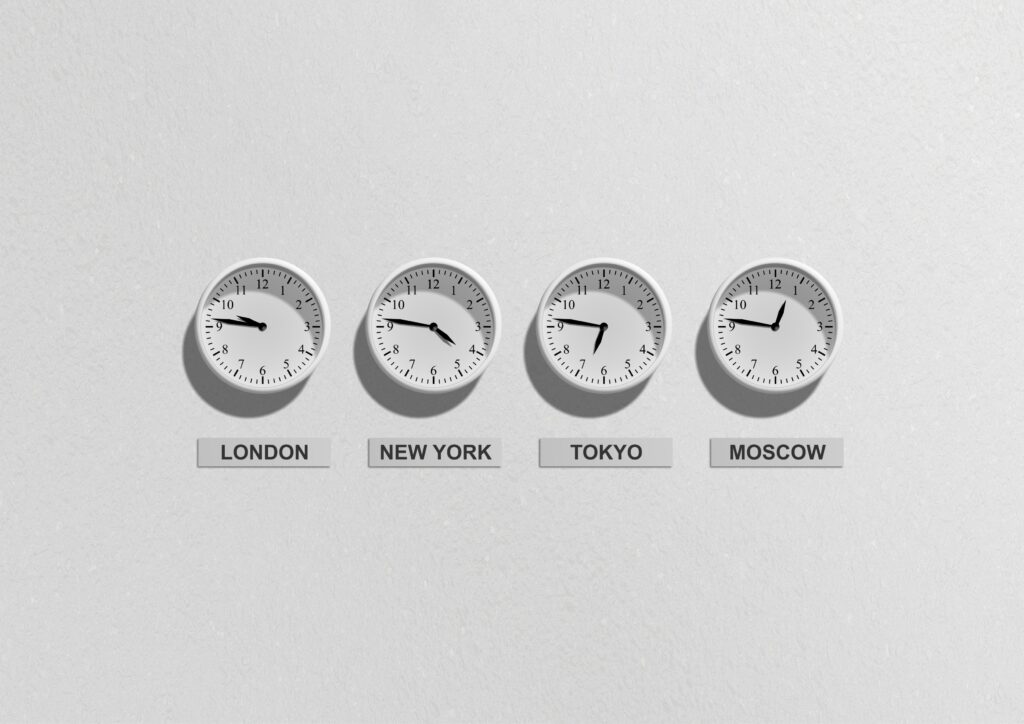
I’ll call you at noon… I see you, so we must be at the same time… Oh, if only it were that simple! Time zones are a critical aspect of modern life, impacting coordination, communication, and being at the right place at the truly right time.
First, let’s start with the technical definition of a time zone: a region having the same standard time, referred to as local time. The earth is divided into 24 standard time zones with each approximately 15 degrees longitude wide. Every time zone is based on GMT – Greenwich Mean Time or UTC – Coordinated Universal Time and is referenced as positive or negative to GMT / UTC.
On my last trip to London, I had to find something new to do so I took the train out to the Royal Observatory and stood on the Prime Meridian 0-degree longitude; the imaginary line of longitude that runs from the North Pole to the South Pole by way of Greenwich, London, England. It is the literal center of the world. And on the flip side of the globe is the International Date Line; sadly the only present way to experience actual time travel.
Time zones are not a rule, and some countries definitely don’t follow the suggested guidance. Regardless of geographical size or other such logical ideas, a government gets to determine its local time. Let’s start close to home with the USA and just the 4 times zones of mainland that don’t follow consistent rules. The lines of longitude do not align with state lines and so states must choose their zone, or not. Multiple states have 2 times zones and can make appointment scheduling a bit tricky. Add on states that choose not to switch to daylight savings time and catching up with my grandmother in AZ can be more complicated.
Other countries have decided to heck with differences and the whole country is in the same time zone. China originally had 5 different time zones, but in 1949 the Communist Party set all five to Beijing’s GMT +8. India is approximately the same width as New York to Utah (spanning 3 time zones) but has only one unified time zone of GMT +5:30. And on the flip side is France of modest size having 12 time zones in total, due to its 11 overseas territories. The tiny Baltic island of Märket has two time zones thanks to its two controlling countries Sweden and Finland.
Did you catch the 30 minutes in India’s time? Yep, some countries really don’t care about geography or being compatible. Some countries choose their local time, which happens to be either a half hour or quarter hour off compared to GMT and UTC. More countries using a 30-minute difference include Sri Lanka, Iran, Afghanistan, Burma, and parts of Australia. And then there is Nepal, set at GMT +5:45. Talk about doing some math to set up a conference call. 🙄
In our international society, time zones are fascinating, necessary, and often a headache in the making. So, I wish you good math, safe travels, and accurate scheduling…
